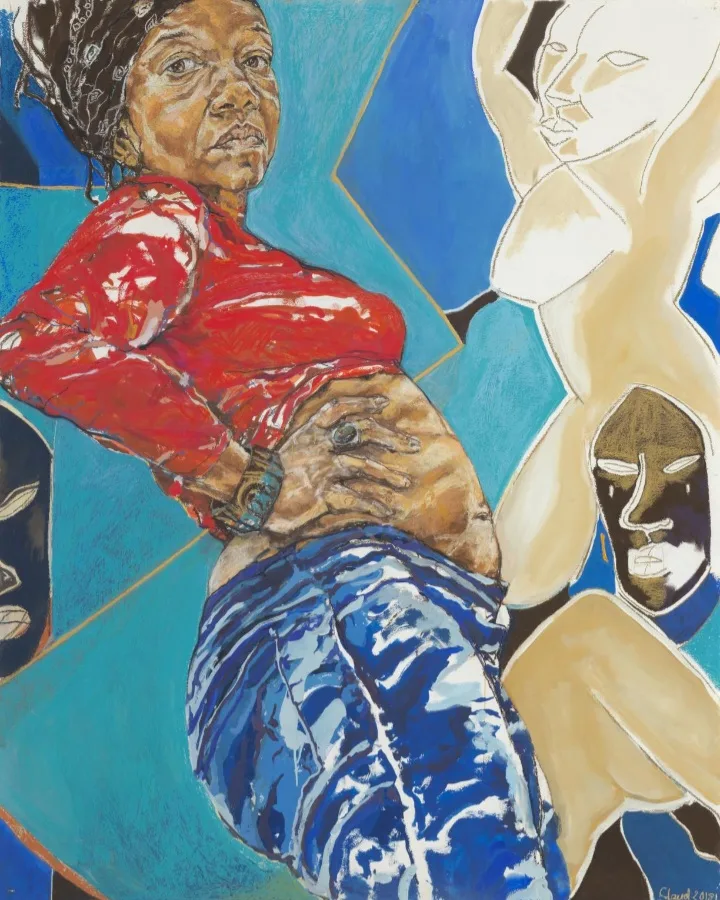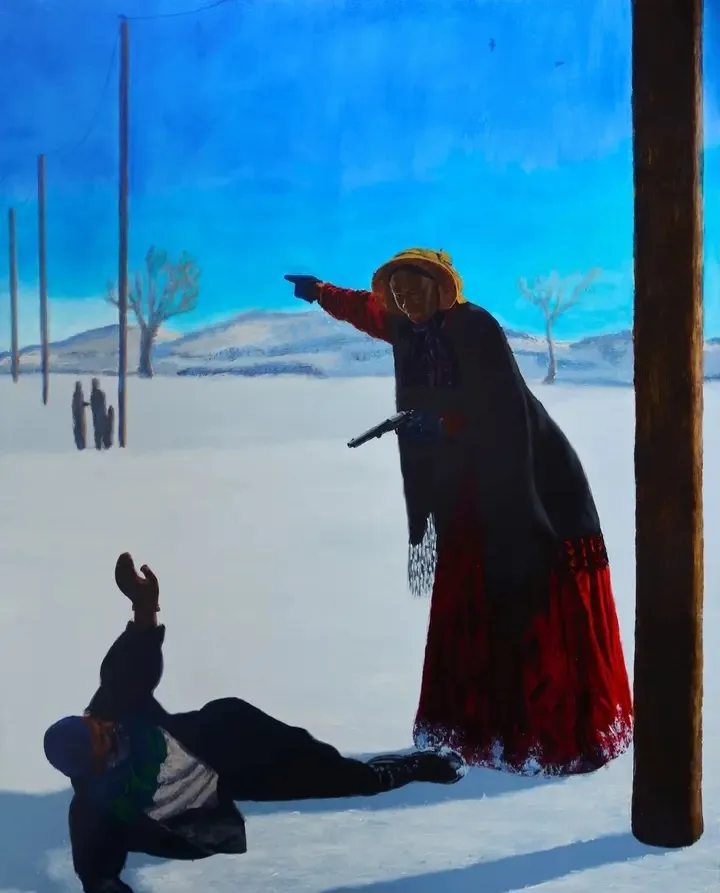The exhibition, curated by writer Ekow Eshun, showcases the work of contemporary artists from the African diaspora and highlights the use of figures to illuminate the richness and complexity of Black life. The exhibition surveys the presence of the Black figure in Western art history, examines its absence and the story of representation told through these works while looking at the social, psychological and cultural contexts in which they were produced. The exhibition will feature the work of leading artists including Kerry James Marshall, Claudette Johnson, Kimathi Donkor, Wangechi Mutu, Toyin Ojih Odutola, and Chris Ofili, to name a few.
Kerry James Marshall’s figures and subjects are almost unrelievedly, densely black. Marshall’s art is all about depictions of blackness and what it means to be a black artist in a historically white institution and art world. Marshall paints a black painter working on her own. There is no black on her palette.
Claudette Johnson’s self-portrait rears before a backdrop derived from Picasso’s Demoiselles d’Avignon. Johnson gives the viewer a baleful, almost accusatory look. If she’s playing a game with Picasso’s infatuation with what he saw as the exotic and the primitive, she does so by being more real and more present than his mask-like heads. She isn’t playing nature to anyone’s culture. The exhibition is divided into three core themes – Double Consciousness, Persistence of History, and Kinship and Connection – each offering reflections on race, identity, and belonging. In the section on Double Consciousness, artists such as Claudette Johnson and Amy Sherald challenge traditional notions of representation.

The Persistence of History theme confronts historical narratives and their impact on contemporary society. Historical figures such as Harriet Tubman and Nanny of the Maroons are brought to life thanks to the masterful work Kimathi Donkor. “Both of them were activists, actually military commanders in the struggle against slavery,” explains Donkor. The section on Kinship and Connection celebrates the richness of Black community and culture. Works by Hurvin Anderson, Denzil Forrester, and Chris Ofili depict moments of joy and resilience, while Toyin Ojih Odutola and Njideka Akunyili Crosby explore themes of domesticity and belonging.
On the frame below, the formidable Harriet Tubman, escaped slave and abolitionist, points a gun at the guy floundering at her feet in Kimathi Donkor’s Harriet Tubman en Route to Canada? We’re on the Underground Railroad, freedom within sight. It looks like a scene from a sensationalist 19th-century news story.

Other artists and their work include Jordan Casteel‘s painting of an elderly guy she befriended on the street in Harlem. Hurvin Anderson revisits the hair dresser where he cut his hair as a child, and end up in the jam-packed cavern of a reggae club with Denzil Forrester.
The exhibition takes its name “The Time is Now” after an essay on desegregation by American author, James Baldwin, where Baldwin acts as a rallying cry for change while placing Black artists and subjects firmly at the forefront. The exhibition runs from the 22nd of February to the 19th of May 2024 at London’s National Portrait Gallery. Following its display at the National Portrait Gallery, the exhibition will tour to The Box in Plymouth before traveling to the USA. Alongside a new sculptural work create especially for the National Portrait Gallery, the exhibition includes works displayed in the UK for the first time, as well as paintings rarely shown in public galleries.



